30 octobre 2021 samedi
53 degrees, clouds
11 mph, WNW wind
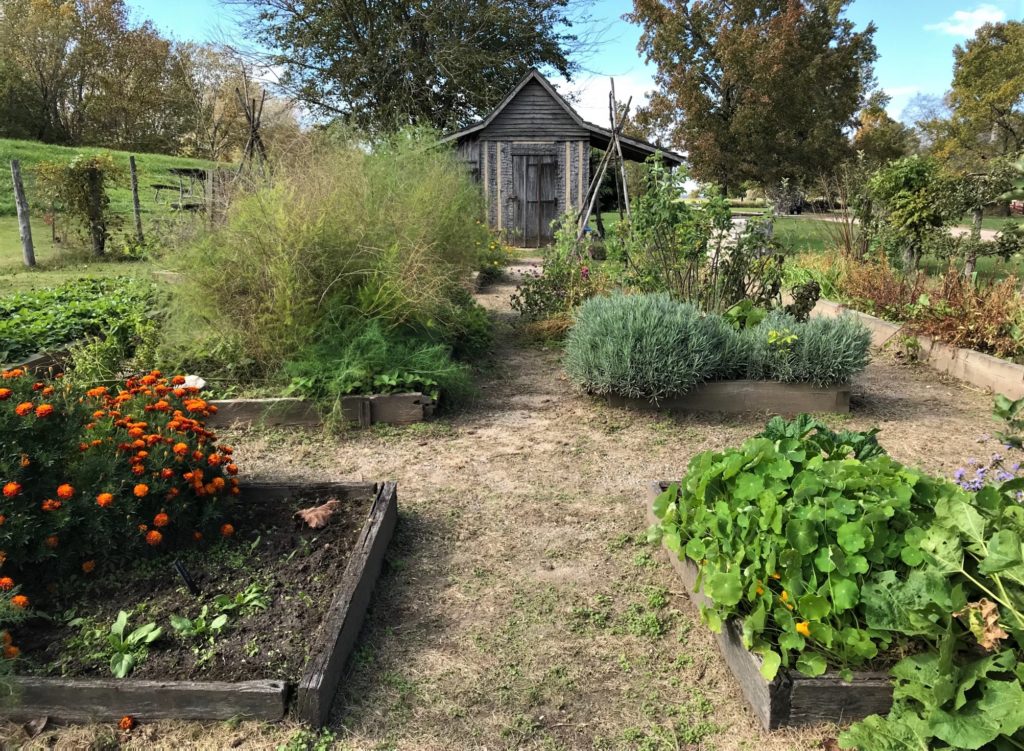
The kitchen garden at Fort de Chartres has been enjoying autumn’s warm temperatures and cool nights, offering an extended growing season that has been greatly appreciated. Recent rains are fueling new vegetable and flower growth and it is a seasoned gardener that realizes that the garden’s October-early November ephemeral beauty is to be enjoyed moment by moment, as who knows when our first frost will arrive.
The summer months were sweltering in the Illinois Country, offering very few moments of respite. Accompanying the difficulty of managing the growing season in the heat, there was very little rain which only amplified plant stress as a result of the related heat. Whenever possible, the garden’s fruit trees, shrubs, raised beds, and the melon bed were watered deeply. I was frankly amazed that some of the autumn vegetable seeds planted in the late summer garden actually germinated and began growing in the unseasonable warmth that followed August into September. Thank you to Sabre and Dan Deterding, Kathy Baird, and Fort staff Shawn Chesnek & Tim Helms, for helping water the potager on the days that I wasn’t able to make it to the Fort. Truly grateful for their garden assistance throughout the year.
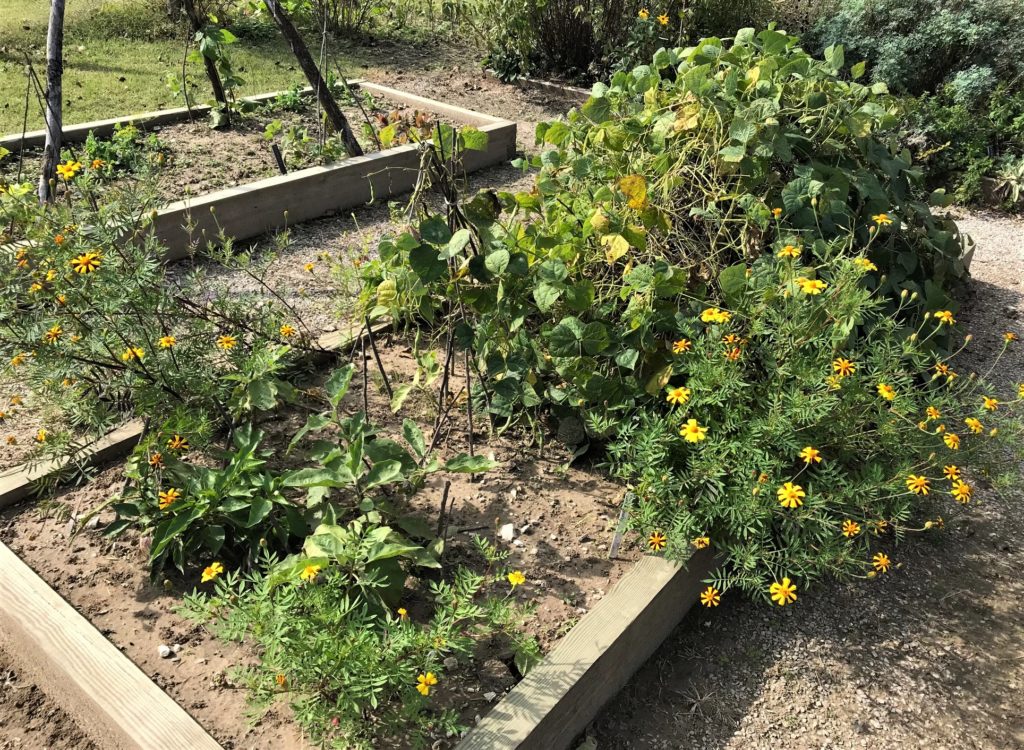
October
Later end cut down your asparagus, and cover your beds with dung, and plant Beans for spring, sow cabbages twentieth; transplant Cauliflowers, plant Horse Radish, prick Lettuces into boxes, sow Peas for the Hot-Bed, Radishes; turf this month
– “A treatise on gardening /by a citizen of Virginia”, John Randolph, Jr. (1727-1784)*
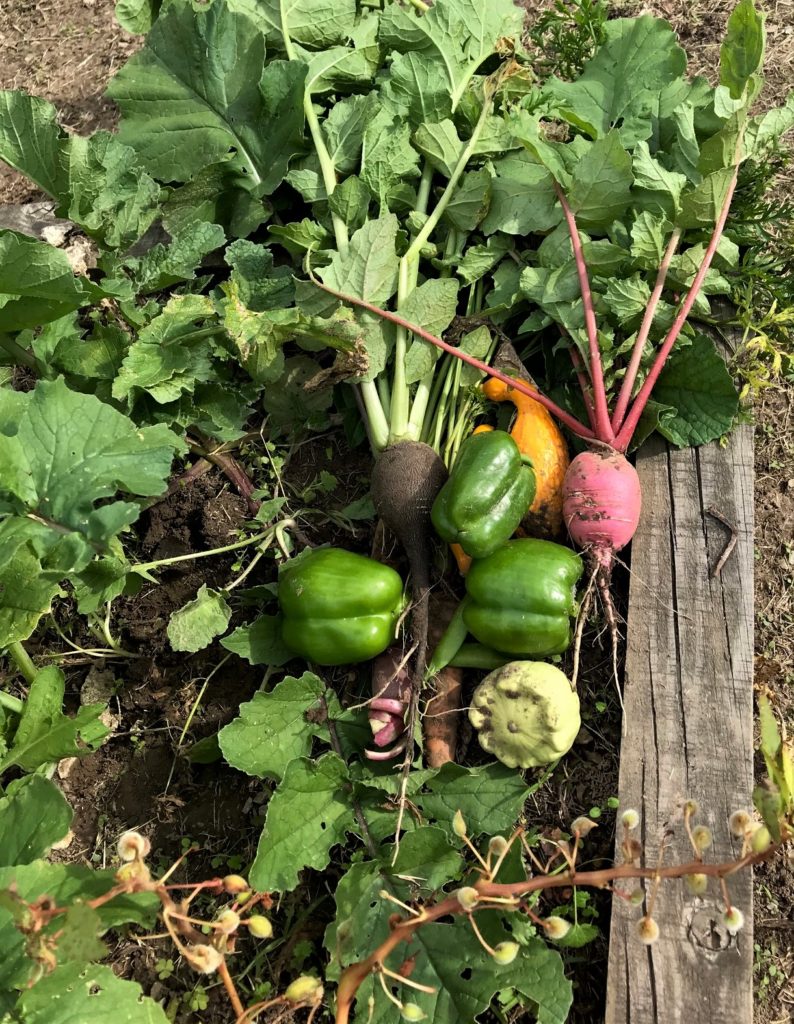
Taking stock of the fall garden, current successes to be enjoyed include continued harvest of heirloom beans, carrots, leeks, lettuces, peas, peppers, radishes, and squash with splashes of color from the Ageratum, French Striped Marigolds, Balsam, and Globe Amaranth. Summer harvests provided fine crops of corn, cucumber, herbs, winter squash, and watermelon-a gratefully accepted bounty after a difficult spring and early summer. Bringing some late summer and fall produce into the autumn kitchen offers adventure and anticipation, as it is time to prepare and preserve some of this seasonal bounty, especially the garden’s heirloom root crops and winter squashes. A culinary journey exploring new period recettes (recipes) of Illinois Country foodways awaits us as the use of these varieties are just waiting to be explored, their stories to be shared here over the winter months.
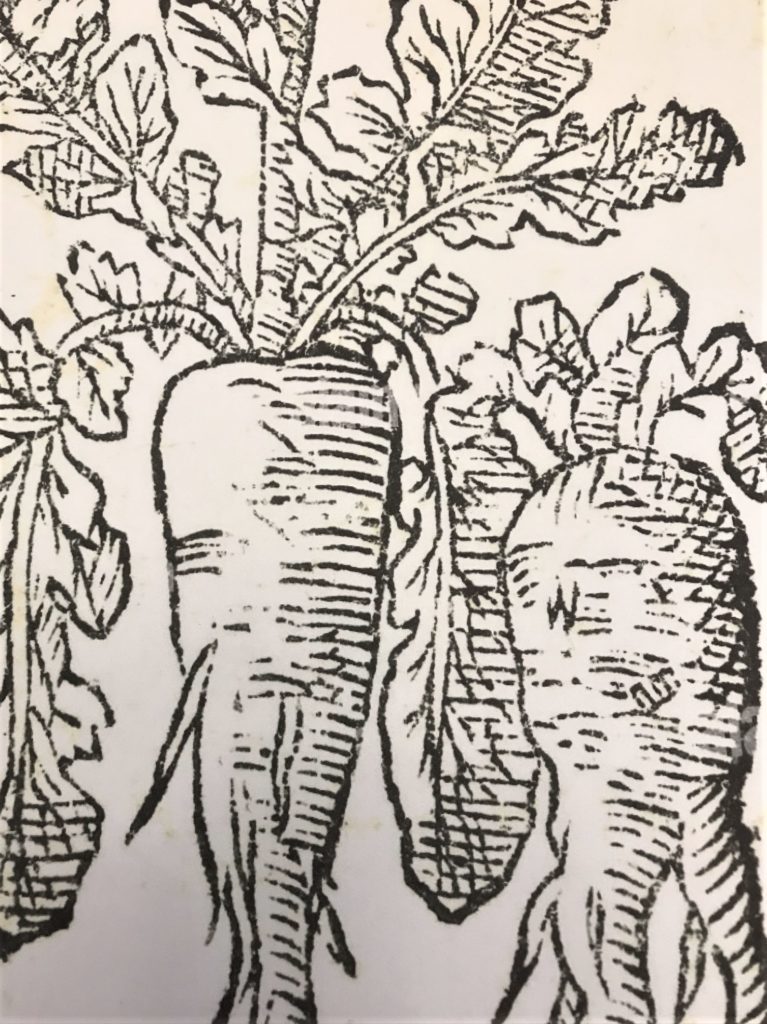
Such stories to be told like that of the Black Spanish Radish (Raphanus sativus var. niger,), its history stretching across centuries from ancient Egypt through medieval times and grown today in the Fort’s jardin potager. This striking radish, known in French as Gros noir rond d’hiver, with its black coarse skin grew easily in the autumn garden and is capable of withstanding frosts, has the ability to store well over cold winter months, and was known as a filling food stuff. With a rather pungent flavor that resembles horseradish, this vegetable offers a lovely translucent white crisp center that features a pattern resembling the rays of the sun. Culinarily this heritage radish could be simply roasted after being cut into slices, brushed with oil, salted, and served with a garnish of green onions. For once cooked, the crisp flesh softens and the flavor mellows, developing mild sweet peppery undertones. Black radishes were seasoned with herbs-such as chervil, thyme, parsley, chives, and mint and they were and are a wonderful addition to prepared dishes featuring apples, pomegranates, arugula, peas, carrots, celery root, truffles, seafood, and roasted meats-such as steak, pork, and poultry. This root vegetable, along with other similar crops, was used in soups and stews. Since this radish flavor can be strong, heirloom vegetable author William Woys Weaver reports that the uncooked radish is often shredded and marinated in salted water, then drained pressed dry, and served as a salad with vinegar and oil, and topped with minced fresh herbs. As with most everything grown in eighteenth-century kitchen gardens, there was a medicinal use as well and the Black Spanish radish was no exception. It was much valued as a treatment for digestive and respiratory issues. Today, through science, we recognize Black radishes are an excellent source of vitamin C and provide potassium, iron, magnesium, and vitamins A, E, and B. Gros noir rond d’hiver radishes, like many of the Fort’s jardin heirloom vegetables and flowers, have been long out of popular use. Today their worth only increases as we master how to prepare and use them in our homes and for the remarkable glimpses of history they offer through their forgotten flavors and traditional medicinal uses, much esteemed in previous centuries.
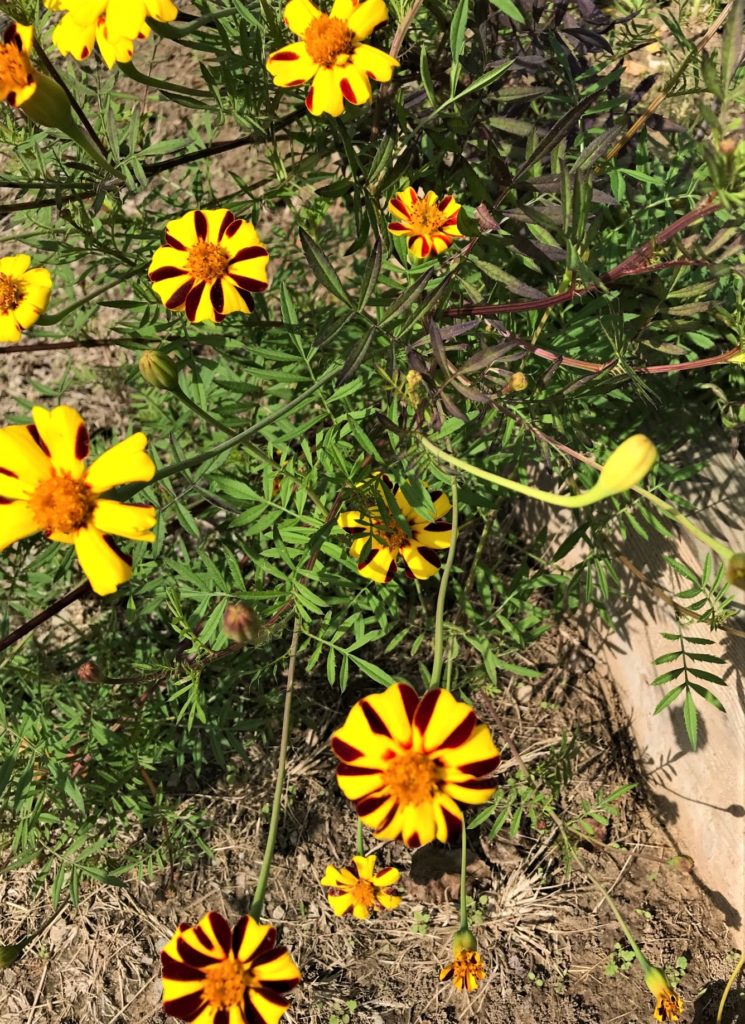
The ever-shortening fall days allow gardeners’ thoughts to turn to those tasks that prepare the garden for winter, while enjoying the last gifts from an autumn jardin. As the season marches on in our fall potager, there is still one other type of harvest still occurring-the harvest of any remaining garden seed to prepare for next year’s garden. And as garden work naturally slows in the cooler days ahead, your seasonal travels might include taking in Illinois Country scenery. If your journey leads to the American Bottom and Fort de Chartres State Historic Site, you are invited to visit this historic fort and perhaps enjoy a stolen moment to view and explore its kitchen garden now in its fall array. À bientôt!
*Around 1760, John Randolph, a governmental attorney in Williamsburg wrote the first American gardening book, “A Treatise on Gardening”, before fleeing back to England in 1775 at the outbreak of the American Revolution. Randolph adapted garden dates to reflect Virginia’s climate, just as we should wisely adjust historic garden schedules to reflect warmer modern weather.
Visit https://www.facebook.com/fdcjardin for the latest Fort de Chartres Heritage Jardin Potager news.
Sources:
Abercrombie, John, 1767. “Everyman Every Man His Own Gardener”
Greene, Wesley, 2012 “Vegetable Gardening the Colonial Williamsburg Way”
Ville, Jean-Bapt. de (Publisher), 1707 Ed. ‘Histoire des plantes de l’Europe et des plus usitées qui viennent d’Asie, d’Afrique, et d’Amérique’
Weaver, William Woys, 2012. “Heirloom Vegetable Gardening: A Master Gardener’s Guide to Planting, Seed Saving, and Cultural History”
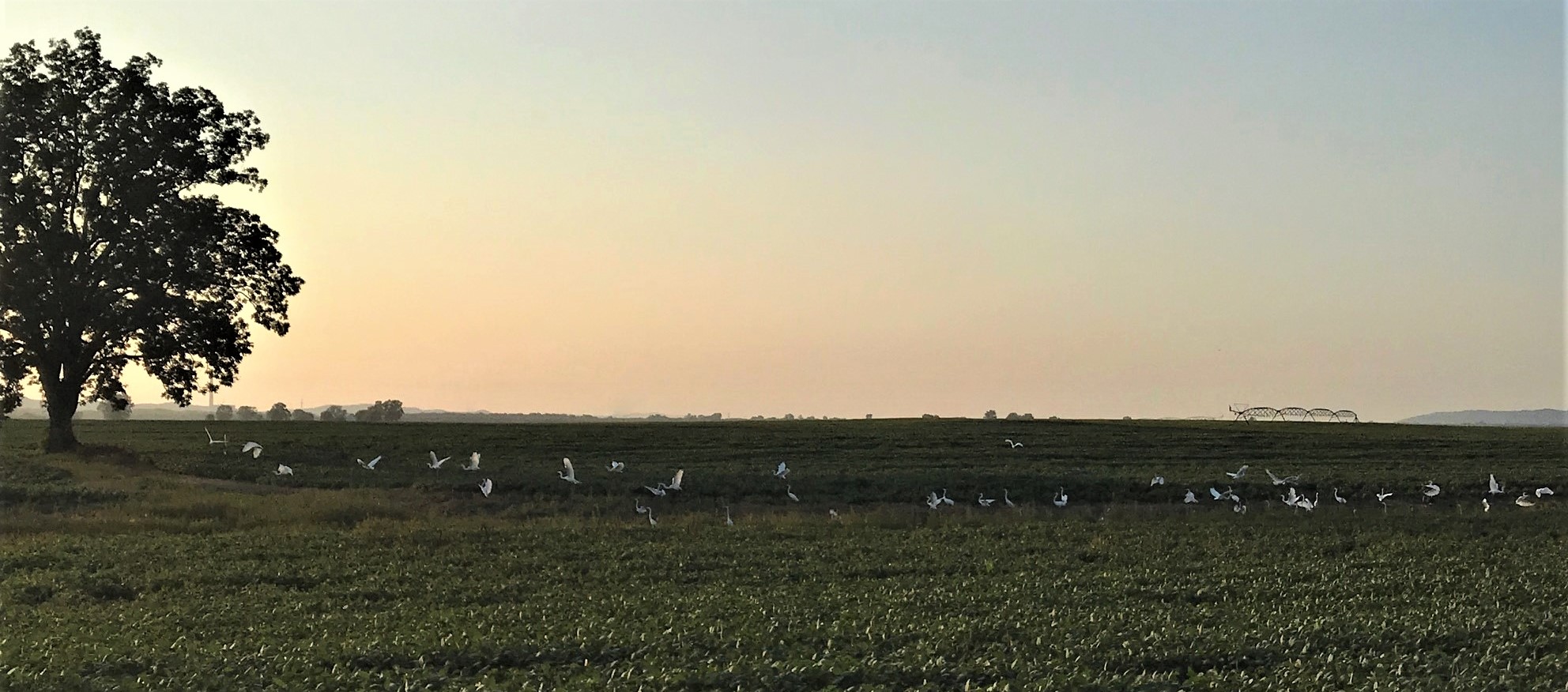
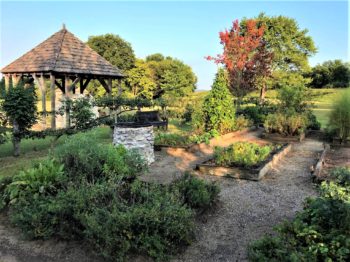 The beginning of the autumn season brought warm weather and sunny skies, perfect conditions to gather the garden’s heirloom produce, seeds, and its largest crop yet of heritage apple and pears. October’s recent frosts and colder weather have brought an end to the last harvests of Cornfield beans, Bull Nose peppers, and Listada de Gandia eggplants. As the more hectic garden work subsides, now time is spent gathering the last seeds for next year and finish cleaning up spent frost-bitten crops while nourishing and tending the fall-planted, cold-hardy vegetables. These autumn vegetables are chosen for their cold tolerance and shorter growing season, such as cabbage, carrot, kale, leeks, lettuce, peas, radishes, and spinach.
The beginning of the autumn season brought warm weather and sunny skies, perfect conditions to gather the garden’s heirloom produce, seeds, and its largest crop yet of heritage apple and pears. October’s recent frosts and colder weather have brought an end to the last harvests of Cornfield beans, Bull Nose peppers, and Listada de Gandia eggplants. As the more hectic garden work subsides, now time is spent gathering the last seeds for next year and finish cleaning up spent frost-bitten crops while nourishing and tending the fall-planted, cold-hardy vegetables. These autumn vegetables are chosen for their cold tolerance and shorter growing season, such as cabbage, carrot, kale, leeks, lettuce, peas, radishes, and spinach.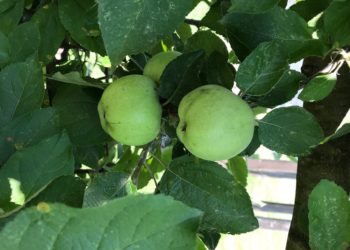
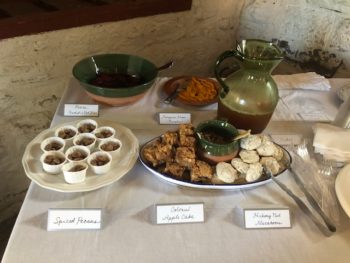
Recent Comments